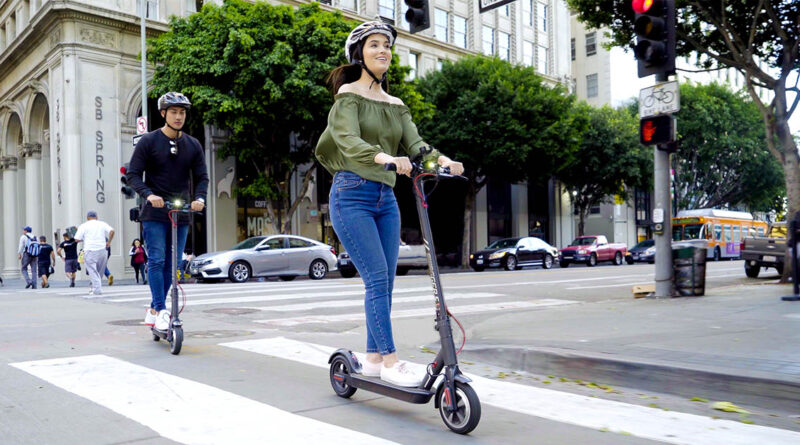New Rules For Spanish Scooter Users In 2024
Spain’s Directorate-General for Traffic (DGT) sets new standards for electric scooters to make city streets safer in 2024 as urban mobility evolves.
Electric scooters, a popular mode of transport, particularly among young people, will face strict new regulations by the DGT on January 22, 2024.
As a response to the increasing use of scooters in Spanish cities and the need for safer and more organised city transport, the changes are deemed necessary for the safety of riders, drivers, and pedestrians.
Speed Limits And Display Rules
Electric scooters must have a maximum speed limit of 25 km/h and a display showing the current speed and battery level. They must also have anti-tampering systems for power and speed control.
Braking And Stability
Scooters must have braking systems that can operate independently. Additionally, a scooter with more than two wheels must have a parking brake so it cannot move when parked. To prevent any accidents due to the falling of parked scooters, those with two wheels must have a lateral stand with stable support for parking.
Lights and Reflectors
Scooters must have reflectors and lights to ensure maximum visibility for the rider and other road users. Specifically, front white reflectors, side white or yellow reflectors, and rear red reflectors are necessary to improve visibility from all angles.
Brake lights should be easily distinguishable but may be combined with the rear light. Installing extra yellow side and red rear reflectors is compulsory for those using scooters to transport products or services.
Audible Warnings
All scooters must have an acoustic warning mechanism installed. Additionally, scooters used for transporting goods or services must have a reversing warning device.
Wheel Specs
The minimum diameter of the wheels must be at least 203.2 mm, and they must have a textured surface to improve grip. Smooth tires are not allowed.
Secure Folding
To prevent any accidental unfolding or damage, scooters are required to have a two-layer security system in place for storage. This guarantees that the scooter remains tightly folded and secure until it is ready to be used again.
Identification
It is a legal requirement for every scooter to have a unique factory marking with essential details such as the maximum speed it can reach, its serial number, year of manufacture, brand, and model. Additionally, having a designated area on the back of the scooter for an identification or registration label is compulsory. This information is paramount to ensure the safety and accountability of each scooter on the road.
The new rules apply to scooters and other personal mobility vehicles (PMVs), except for skateboards, which are omitted from any new regulations until January 2027.
The DGT has implemented these extensive measures to regulate the use of electric scooters and improve road safety and order in urban areas. As we move closer to 2024, these changes represent a substantial transformation in how electric scooters will be incorporated into the fabric of city life.

